Posts Tagged: wool carder bee
European Wool Carder Bees Are on the Move
Seen any European wool carder bees lately? European wool carder bees (so named because the female collects or cards plant hairs for their nests) are on the move. The bees, about the size of honey bees, are mostly black and yellow. The females...
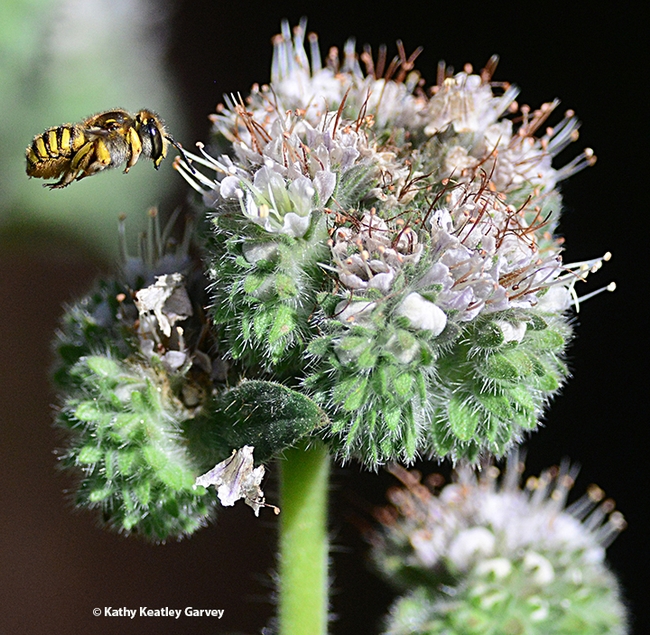
A European wool carder bee in flight. (Photo by Kathy Keatley Garvey)
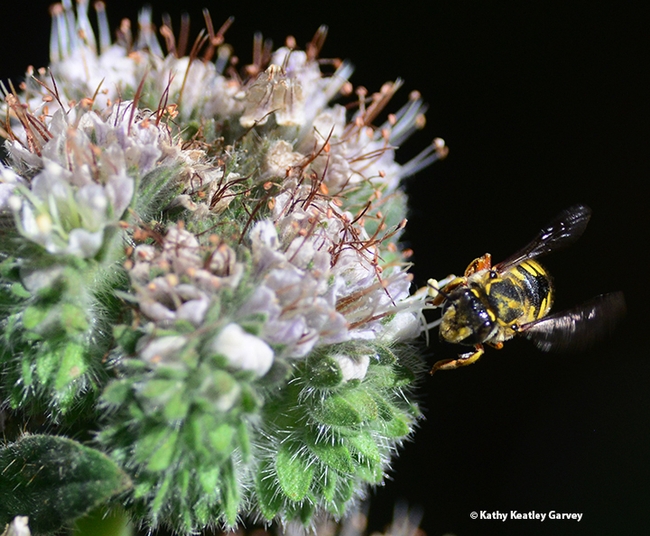
European wool carder bees are difficult to photograph when they're zipping around. (Photo by Kathy Keatley Garvey)
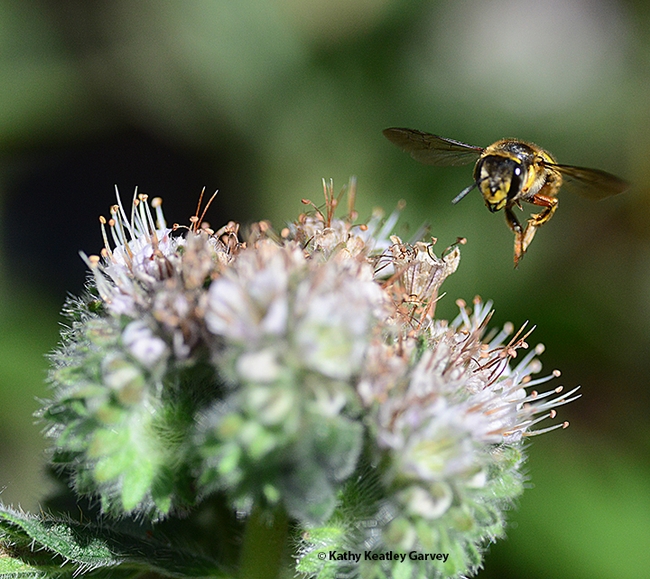
Make way! This European wool carder lets everyone know who's boss. (Photo by Kathy Keatley Garvey)
The Wonderful World of Insects
Learning more about insects ought to be one of your New Year's resolutions. Here's a good place to start: read the UC Davis Bohart Museum of Entomology's Insect Information Sheets. Terry Erwin of the Smithsonian Institution's...
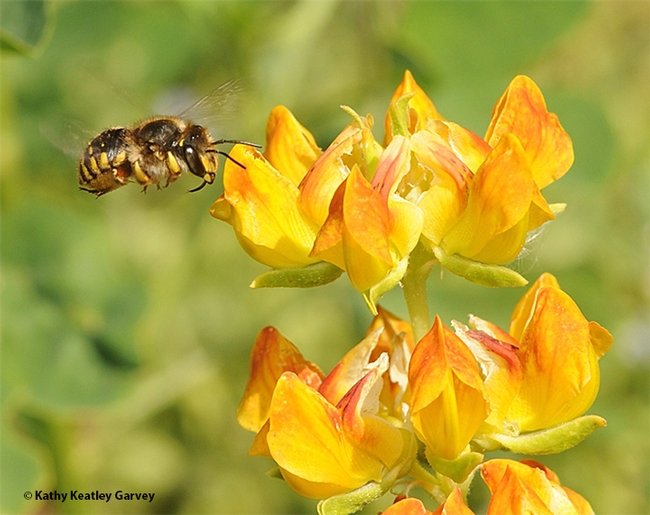
A European wool carder bee, Anthidium manicatum, heads for a snapdragon. (Photo by Kathy Keatley Garvey)
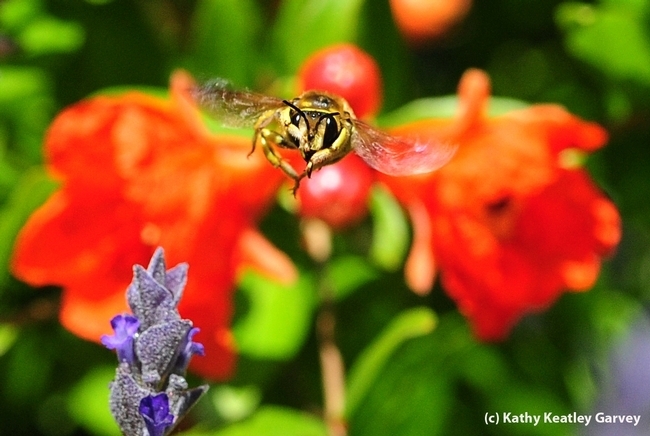
A male European wool carder in flight over a pomegranate blossom. (Photo by Kathy Keatley Garvey)
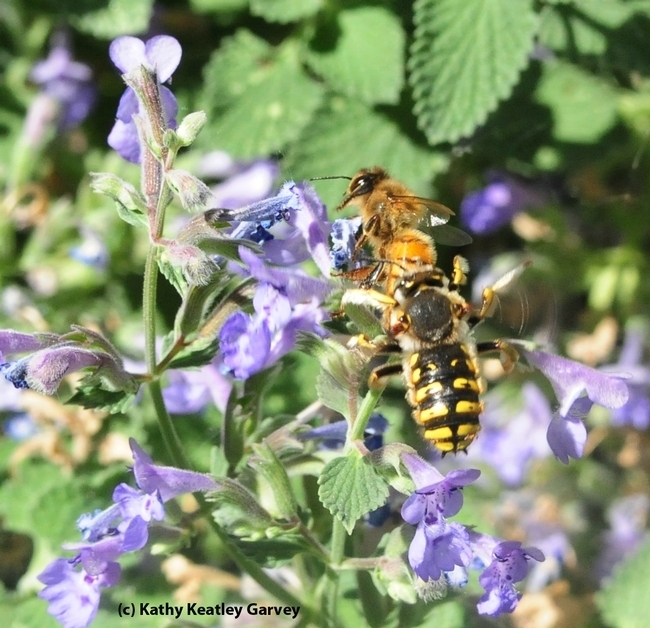
Male European wool carder bees are highly territorial. This one is targeting a honey bee on a catmint blossom. (Photo by Kathy Keatley Garvey)
Bee-Hold, The Eye of the Bee-Holder
Bee-hold, the eye of a bee-holder. When you have a "Bee Crossing" sign in your pollinator garden, odds are that bees will cross right in front of that sign. And it's not always a honey bee. European wool carder bees (Anthidium manicatum) zip around...

"Bee Crossing" signs are favorites in pollinator gardens, not for the bees, but for the humans. (Photo by Kathy Keatley Garvey)
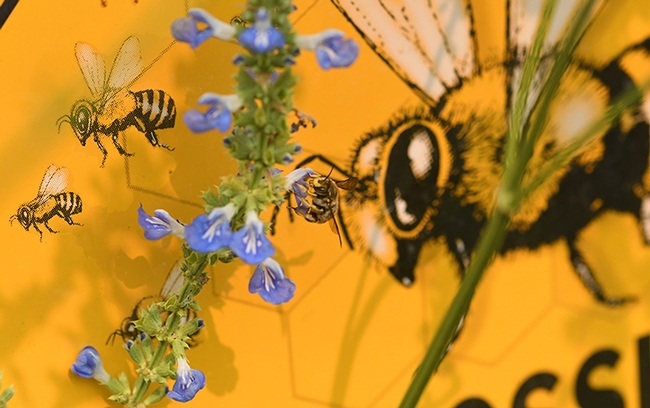
Sign of the times: A European wool carder bees (Anthidium manicatum) is surrounded by honey bees on the "Bee Crossing" sign. (Photo by Kathy Keatley Garvey)
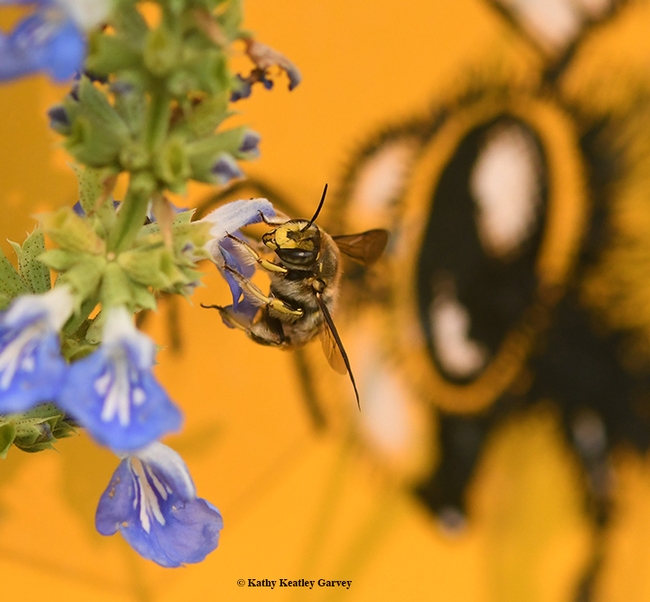
Close-up of European wool carder bee nectaring on a blue spike salvia. The eye of a honey bee adds to this photo. (Photo by Kathy Keatley Garvey)
This Bully Bee Goes for the Blue Plate Special
It's a bully. But what a bully! Ever seen the male European wool carder bee (Anthidium manicatum) protecting its turf? It's "no-holds barred" on our blue spike sage (Salvia uliginosa) and frankly, it's a delight to see and photograph. The highly...
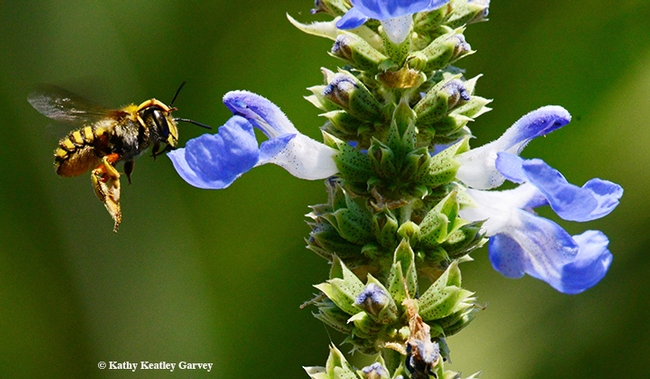
European wool carder bee, Anthidium manicatum, heads toward a blue spike sage, Salvia uliginosa. (Photo by Kathy Keatley Garvey)
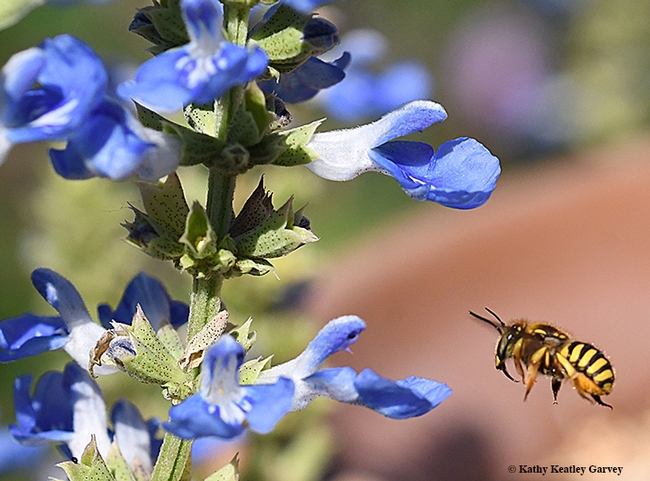
The European wool carder bee, an Old World bee, seems to prefer blue flowers with a long throat. This is blue spike sage, Salvia uliginosa, a native of Brazil. (Photo by Kathy Keatley Garvey)
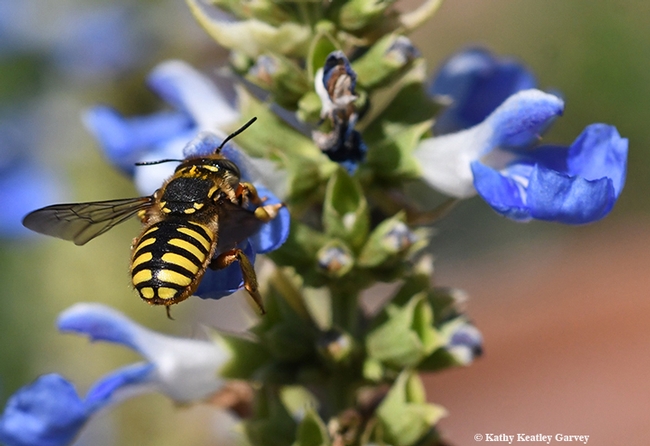
Two European wool carder bees in the process of giving the world more wool carder bees. (Photo by Kathy Keatley Garvey)
Under Attack: European Wool Carder Bee Vs. Male Valley Carpenter Bee
Meet the competitors. In this corner, meet Mr. Teddy Bear. He's a blond, green-eyed carpenter bee, Xylocopa varipuncta, a native, and one of three species of carpenter bees commonly found from northern to southern California to western New...
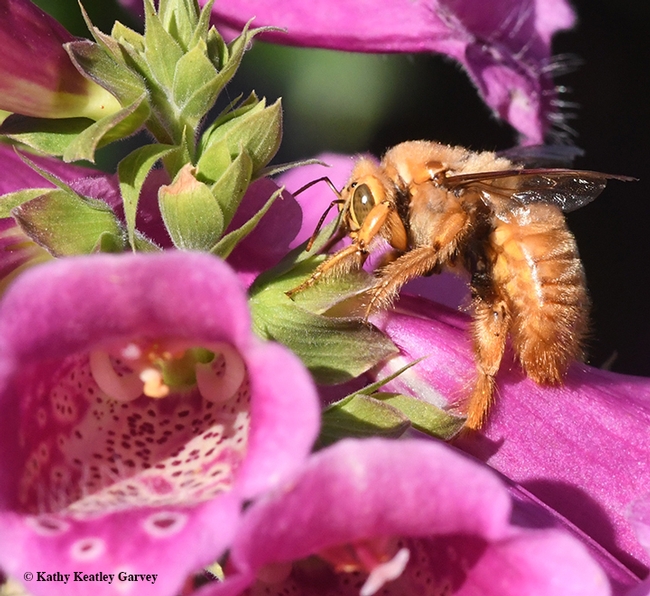
Meet Mr. Teddy Bear, a green-eyed blond trying to nourish himself on foxglove nectar. (Photo by Kathy Keatley Garvey)
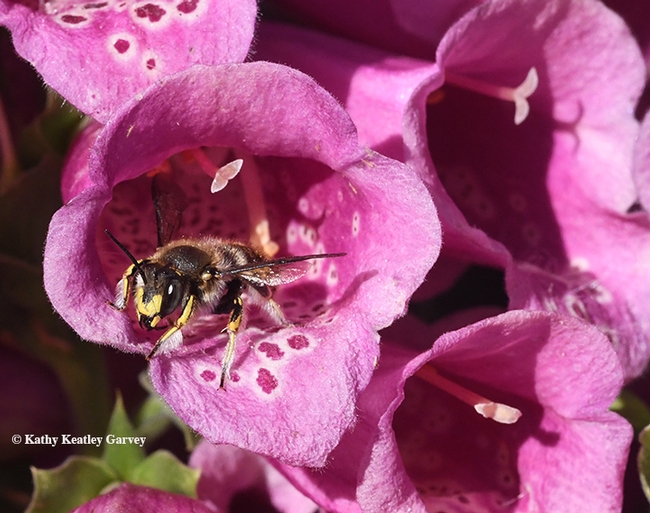
Meet Mr. Bodyslam, a very territorial European wool carder bee. He patrols the foxgloves. (Photo by Kathy Keatley Garvey)
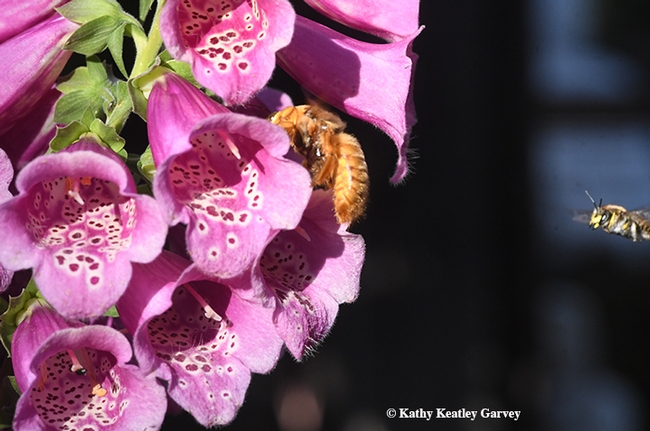
Mr. Bodyslam targets the unsuspecting Mr. Teddy Bear. "Hey, get away from my flowers and nobody gets hurt." (Photo by Kathy Keatley Garvey)
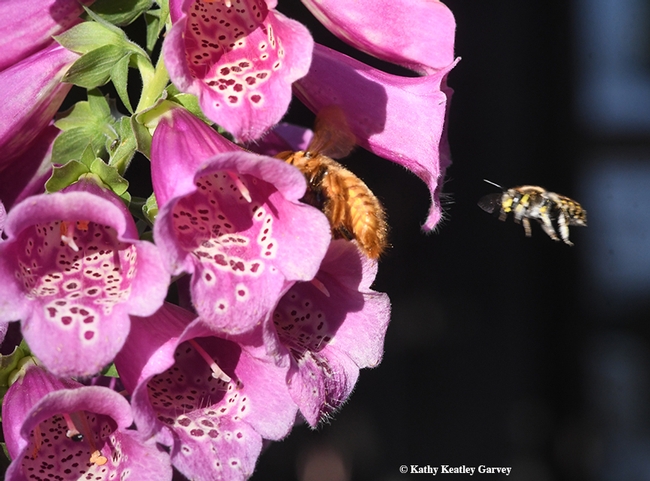
Mr. Bodyslam is moving so fast, he's a blur. (Photo by Kathy Keatley Garvey)
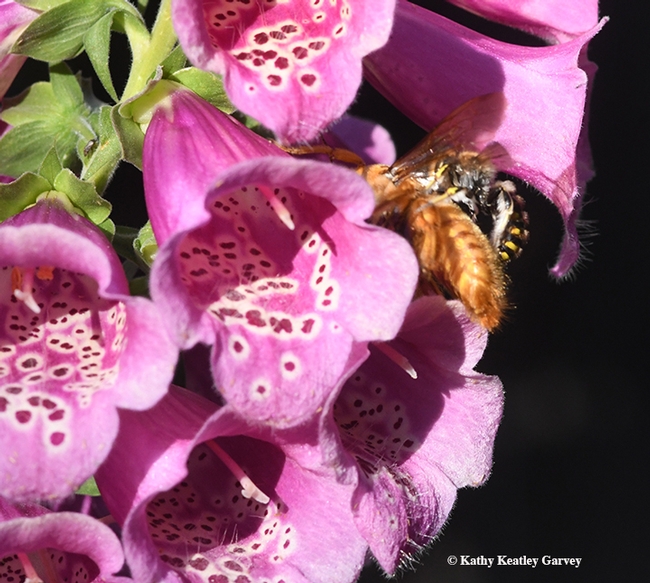
And the battle begins! Mr. Bodyslam attacks Mr. Teddy Bear. "Hey, can't a fellow get a bite to eat in peace?" (Photo by Kathy Keatley Garvey)
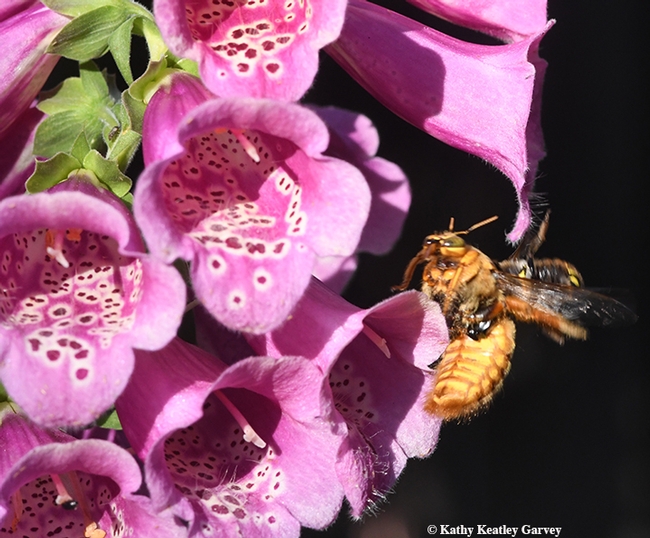
Gotcha! The attack turns vicious. Mr. Bodyslam slams into Mr. Teddy Bear, a blow that prompted Mr. Teddy Bear to depart (only to return). (Photo by Kathy Keatley Garvey)

